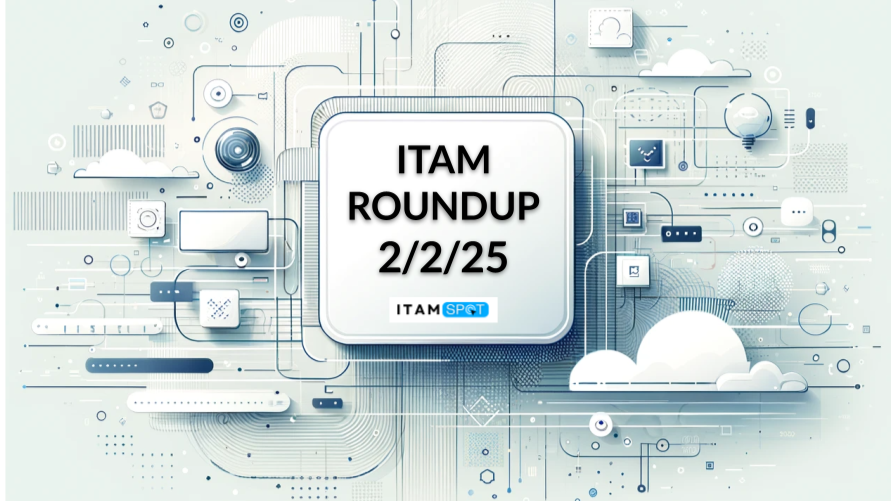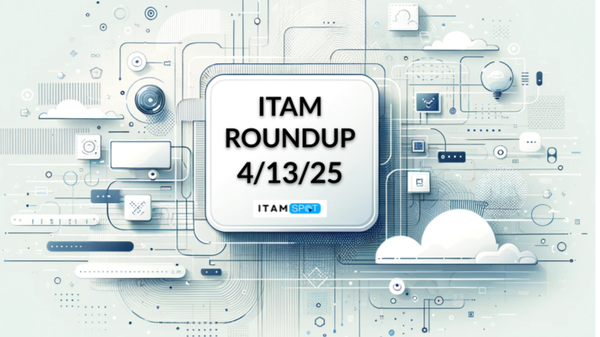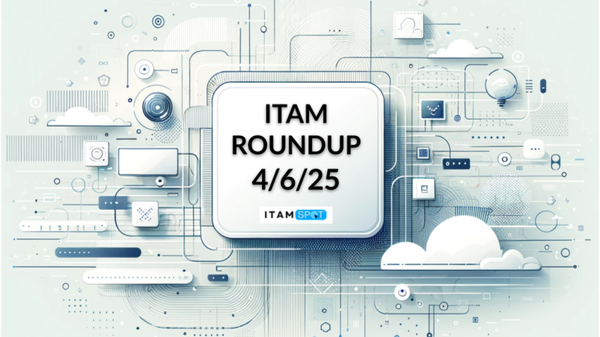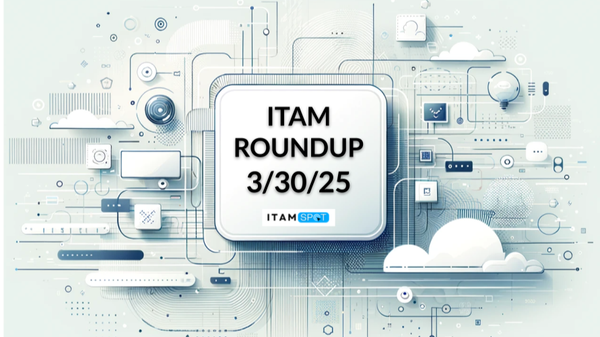The ITAM Roundup: 2/2/25
📰 News
Microsoft’s AI revenue grows, but its stock falls on lower guidance and spending concerns
Microsoft reported a 10% increase in profits for Q2, driven by a growing $13 billion AI product and services revenue, but its stock dropped due to concerns over lower guidance and slower-than-expected growth in its Azure cloud platform. Despite a 31% increase in Azure revenue, capacity constraints and lower-than-expected guidance for the upcoming quarter contributed to investor concerns. The rise of DeepSeek, a competitor offering more cost-efficient AI models, also added uncertainty, with analysts questioning Microsoft's strategy and investment in AI infrastructure.

Trump’s tariffs, cuts may well put tech in a chokehold, say analysts
A Forrester report predicts that Trump's return to the White House may significantly disrupt the tech industry through import tariffs, potential spending cuts, and deregulation. Tariffs on Mexico, Canada, China, and semiconductor imports could drive up costs, while reductions in CHIPS Act subsidies may slow domestic chip production, impacting major tech firms. Additionally, the rollback of green energy initiatives could affect jobs in tech-related fields, while economic uncertainty and possible trade wars leave the industry's future uncertain.

Microsoft and Google Are Forcing Customers to Adopt AI at a Premium Price: What Customers Need to Know
Microsoft and Google are integrating AI into their productivity suites at a premium price, with Microsoft increasing the cost of its consumer Microsoft 365 plans by $3 per month to include Copilot AI features, while Google is adding AI to Workspace for an extra $2 monthly. This move is primarily driven by revenue growth, with Microsoft potentially generating over $3 billion annually from the price hikes, despite many users not fully utilizing AI features. Enterprise customers should prepare for similar price increases by evaluating current product usage, negotiating proactively, and ensuring they only pay for features that provide real value.

Justice Department sues to block HPE’s $14B Juniper acquisition
The U.S. Justice Department has filed a lawsuit to block Hewlett Packard Enterprise’s $14 billion acquisition of Juniper Networks, citing concerns over reduced competition in the enterprise WLAN market, where HPE and Cisco would control over 70% of the market. The lawsuit argues that the deal would result in higher prices for customers and stifle innovation, as HPE and Juniper frequently compete for the same contracts. Despite regulatory approval in the EU and the U.K., both companies plan to vigorously defend the acquisition, claiming it would lead to greater innovation and choice for customers.

ServiceNow adds agentic capabilities, thousands of pre-built AI agents
ServiceNow is enhancing its AI agent portfolio by introducing an AI Agent Orchestrator for better coordination and adding thousands of pre-built AI agents, along with an AI agent studio for tailored solutions. These features will be available in March for Enterprise Plus customers at no additional cost. With nearly 1,000 customers already using AI agents, including companies like EY and Rolls-Royce, ServiceNow is expanding its AI capabilities to streamline operations and improve decision-making while also acquiring the conversational AI platform Cuein to advance its roadmap.
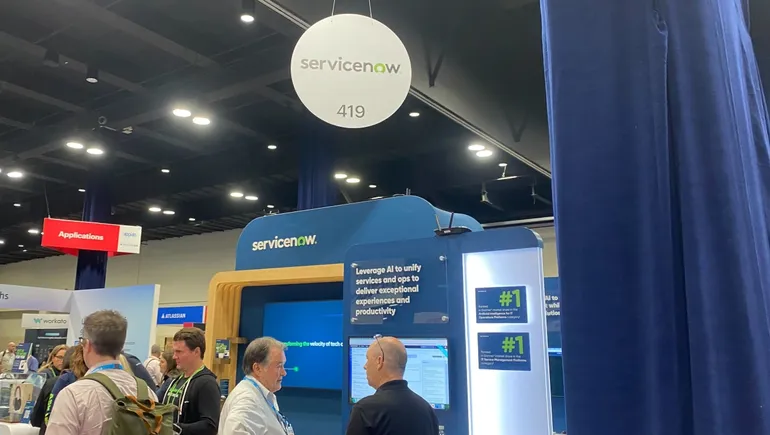
Intel sinks $19B into the red, kills Falcon Shores GPUs, delays Clearwater Forest Xeons
Intel ended 2024 with a $19 billion loss, scrapped its Falcon Shores GPU project, and delayed its Clearwater Forest Xeon processors to 2026, signaling struggles in its AI and data center ambitions. Despite efforts to revamp its foundry business and secure subsidies, the company’s financials remain weak, with declining revenues, falling margins, and continued operating losses. While interim leadership pushes forward with restructuring and cost-cutting, Intel's long-term recovery depends on the success of its 18A process technology and its ability to regain trust in the semiconductor industry.
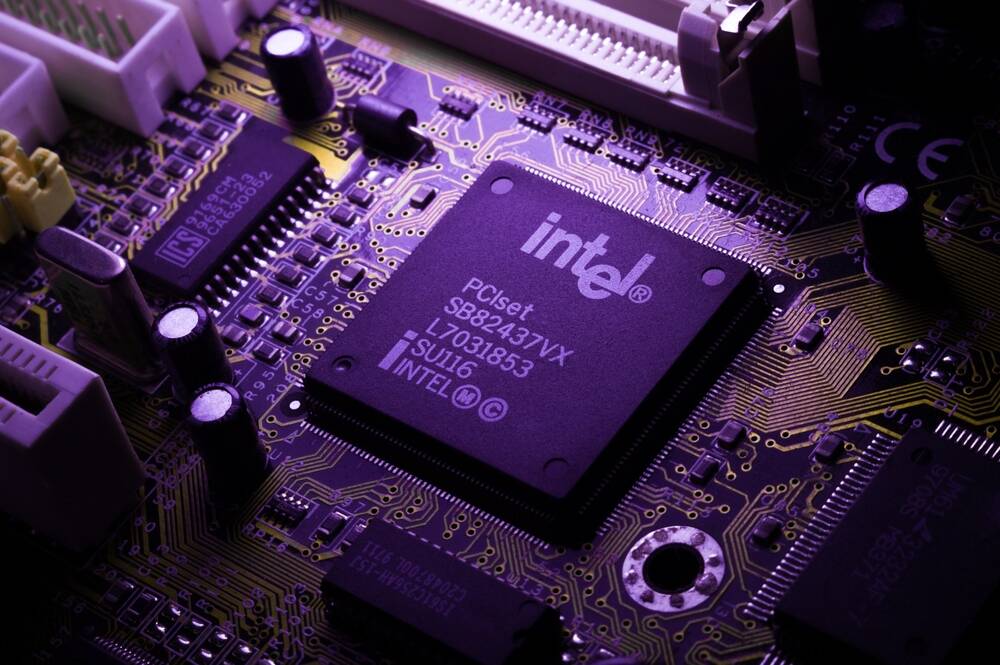
Experts are betting big on PCs with ARM processors. Should you?
Experts believe ARM processors could revolutionize computing and challenge x86 dominance due to their efficiency, power savings, and AI capabilities. However, legacy software incompatibility and enterprise inertia present significant hurdles to widespread adoption. The future likely lies in a hybrid model where ARM thrives in mobile and AI-driven environments while x86 remains essential for legacy enterprise workloads.

📖 Tips
Microsoft 365 Pricing Changes: What You Need to Know in 2025
Microsoft is introducing pricing changes in 2025, including a new monthly billing option for annual subscriptions with a 5% premium and significant price increases for Teams Phone and Power BI licenses. While upfront annual and triennial subscriptions remain unaffected, organizations must prepare for higher costs, with price hikes of up to 40% on some products. These changes take full effect by April 1, 2025, and businesses are advised to strategize their renewals to avoid unexpected budget impacts.

Cyber-Resilience regulations are here—is your organization ready?
New cyber-resilience regulations, such as DORA and NIS2, impose strict compliance requirements on organizations and their supply chains, with non-compliance leading to severe financial penalties. Effective cybersecurity requires IT asset visibility, lifecycle management, and proactive vulnerability patching, which are critical in mitigating risks like ransomware attacks and operational downtime. Flexera helps organizations strengthen their cyber resilience by providing IT asset insights, detecting end-of-life software, tracking vulnerabilities, and integrating data into CMDBs for better risk management and compliance.

How to pass your FinOps certification exam
The FinOps Practitioner Certification validates expertise in cloud financial management, cost optimization, and financial accountability, making it valuable for IT leaders and finance professionals. The exam covers key topics like the FinOps framework, cloud cost analysis, and governance, with study resources available on the FinOps Foundation website, including guides, glossaries, and books like *Cloud FinOps*. Flexera experts recommend leveraging free resources, using visual aids, and starting with introductory certifications to build a strong foundation for success.

Microsoft Support: You’ve Got More Options Than You Think
Microsoft’s Unified Support plan is unpopular among many enterprises. US Cloud VP Mike Jones discusses the latest updates on the plan and shares alternative support options. In a conversation with Directions’ Mary Jo Foley, he also provides tips and tricks for navigating Microsoft support effectively.

Boosting Visibility with an Effective CMDB Strategy
An effective CMDB strategy enhances IT asset visibility, risk management, and decision-making by centralizing and automating asset tracking, security, and compliance. Key elements include identifying and documenting assets, integrating IT service management tools, implementing change management, and leveraging AI and predictive analytics for automation and accuracy. By adopting best practices like ITIL alignment and real-time asset discovery, organizations can maximize ROI, streamline IT operations, and strengthen security while minimizing manual efforts and operational disruptions.
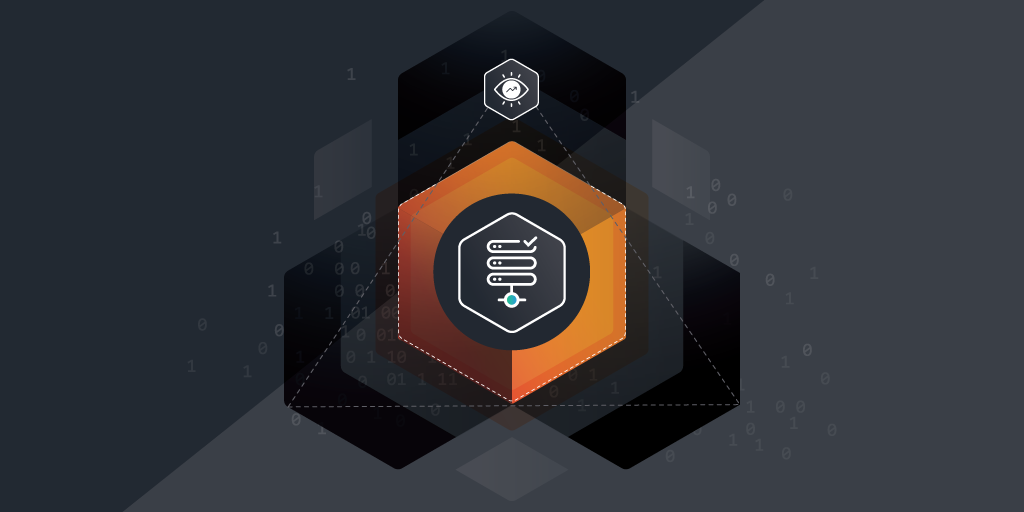
🐛Bugs & Exploits
DeepSeek exposes database with over 1 million chat records
DeepSeek, a Chinese AI startup, accidentally exposed over a million chat records, API keys, and backend details through unsecured ClickHouse databases. Security firm Wiz discovered the issue, warning that attackers could retrieve sensitive logs, plaintext passwords, and proprietary data. DeepSeek has since addressed the vulnerability, but the incident raises concerns about its security practices and potential risks for organizations using its AI model.

VMware plugs steal-my-credentials holes in Cloud Foundation
Broadcom has patched five high-severity vulnerabilities in VMware's Cloud Foundation, specifically in its Aria Operations and Aria Operations for Logs tools, addressing issues that could lead to credential leakage and privilege escalation. The most critical flaws include information disclosure vulnerabilities that could allow attackers with limited access to steal credentials or execute malicious scripts. While no in-the-wild exploits have been reported, users are advised to apply the available patches promptly to mitigate potential security risks.


